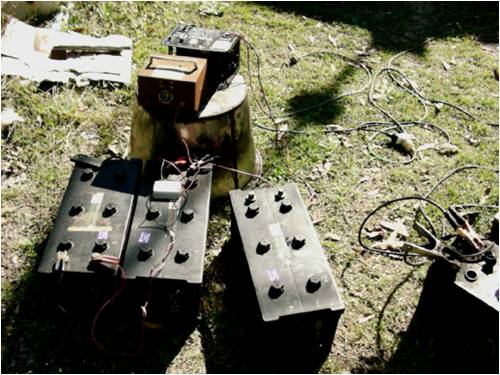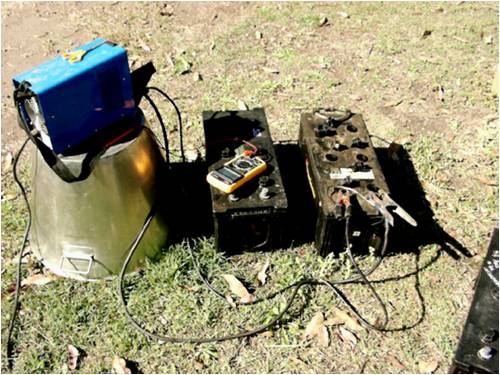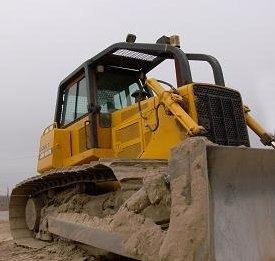
|

|
Forum Index : Solar : Panels-Batteries design flaw?
| Author | Message | ||||
| RMS707 Newbie Joined: 17/11/2010 Location: AustraliaPosts: 3 |
Hello all, long time lurker, first time poster! I've just come across what i fear might be a (serious?) flaw in my off grid solar setup. My 240w panels are rated at 30.1V peak power and 37.2V open cct (4 strings of 2 panels - 48v/1920w system). I just changed my batt bank from old 2nd hand gels to new flooded batts. The specs that came with the new batts show an equalize voltage much higher than the gel cells of 62.4V (15.6v per 12v battery). If i have 30.1x2=60.2V as my (on paper) max power voltage, will i ever be able to equalize my bank properly or will i allways be a couple of volts short of recommended (62.4v)? Or will things be covered ok because open cct voltage is high enough but it just wont be at max power? Or is the shortfall too small to worry about? Regulator is a PL40. Cant think of any other info that might be needed at moment. I'm worrying a bit over this after the outlay the new batts set me back, hopefully for nothing 
Thanks in advance, Ian |
||||
| Greenbelt Guru Joined: 11/01/2009 Location: United StatesPosts: 566 |
RMS707, Welcome to the Forum. I'm not an authority on solar panels but have some general knowledge of charging systems. If your Max Power voltage is 30.1 I read this as, maximum current is being produced. Most systems I have worked with tend to operate at minimum voltage while Using or producing full Load current. as your Batteries reach near full charge the resistance will increase which reduces the current flow, with lesser current flow the system voltage will increase. Somewhere between 30.1 and open circuit at 37.2 the panels will stop producing but they should produce a small current even at 36 volts. Others here on the forum know the answer, at the moment I dont believe you have a problem. as a test you could let the system charge for several hours and turn off all lights and ?? Do a voltage check on the system. Cheers-- Time has proven that I am blind to the Obvious, some of the above may be True? |
||||
| VK4AYQ Guru Joined: 02/12/2009 Location: AustraliaPosts: 2539 |
Hi Ian On my system a 24 volt setup I have a bypass on the regulator which when switched in the batteries can be taken up to 36 volts but at a small amperage. I also use desulphators permanently connected to the batteries and have found that keeps the batteries equalized without boiling the hell out of them, my batteries where second hand time expired UPS batteries and have actually improved over 12 months with this sort of treatment. As Greenbelt says the maximum power of the panels is lower than the maximum voltage that they will float up to, so disconnect all load from your batteries and monitor the voltage and amps in hold the equalization voltage for four hours and you should everything OK. All the best Bob Foolin Around |
||||
| RMS707 Newbie Joined: 17/11/2010 Location: AustraliaPosts: 3 |
Thanks for the replies. Good idea on the bypass Bob. I'll give that a shot. Also, with the desulfators, I understand they are there to break down any sulphation that builds up on the plates, but I didn't know you can have them permanently connected. Can you use one per string and manually switch between strings or is it a one per battery affair? For the last day or 2 I have been trying to get the volts up there but its hard to get them past 60v even with the regulator put in manual equalize mode set to 64v. It just seems to sit at 59-60. *But* This arvo I think I might have found somthing that wasnt exactly helping. One batt was reading lower than the others, electrolyte testing of each cell showed one that was 1.160, all the others were 2.255 or 2.600. Troubleshooting on the spec sheet states a 50 point or greater difference and you should replace that battery (dont bother charging it). These batteries are only a couple weeks old and have had generous charging since install. Oh well, I guess these things happen from time to time. I'm still going to wire in that bypass though 
Ian Edit: Could you recommend a desulphator Bob? |
||||
| VK4AYQ Guru Joined: 02/12/2009 Location: AustraliaPosts: 2539 |
Hi Ian Sounds like you need to pull a warranty claim on the sick battery as it shouldn't be that low, I had a few like that and put a 12 volt desulphator across the low battery until it came good but mine where already 5 years old. Mine are wired into 24 volts and banked and at the moment I have a desulphator across each second bank, when i can afford more I will put one across each 24 volt group,4x6volt. The desulphators I use are a low intensity unit designed to be left on. They are made in 12 and 24 volt and they have a universal one that does 6 and 12 volt, I use a 12 volt one across low batteries to bring them up, as mine are SLA i can't get SG reading so measure voltage and if any battery is .2 volts lower I put the desulphator on it for a couple of weeks. These ones are reliable and I haven't managed to get one to smoke yet, still working on that, they cost about $50 not much more than the bits to make one. www.infinitumstore.com is their site. Have a read of the info on the site. www.infinitumstore.com This is one you can make yourself. 2011-03-07_154550_2010-05-26_000648_desulfator.pdf This was a set of 12 volt batteries that belong to a friend they where dead flat when I went to work on them and had been flat for nearly a year, now they are at around 80% capacity and sitting on the side of my battery bank. It is the little alloy box on top of the battery 
Batteries tied to main batteries This is the voltage at rest after a few weeks of desulphation I used my little welder to get them conducting initially as they would take any charge at all on a normal charger. 
All the best Bob Foolin Around |
||||
| VK4AYQ Guru Joined: 02/12/2009 Location: AustraliaPosts: 2539 |
Hi ian This is the instruction sheet from the pack the desulphator comes in. All the best Bob Foolin Around |
||||
| Tinker Guru Joined: 07/11/2007 Location: AustraliaPosts: 1904 |
Hi Bob, I ordered a desulphator (like the one you show above) from the Infinitum store and it arrived today. I ordered the 24V model but there are no marks on it or the package to say what model I got. To be safe I connected it to a 12V battery and the green light comes on - indicating its working - CRO shows its working too. If it were the 24V model the red light should stay on according to their tech info. Did I get short changed? There is a price difference. I was just wondering if you figured out another way to check its voltage rating without destroying it. I could use it on 12V as the battery bank uses serial/ parallel 12V/100Ah batteries. I did send them an e-mail but am reluctant to spend extra postage money in case they want it returned for exchange. Did you get the 24V model? Does that have any distinguishing marks? They appear identical on the pics on their website. Klaus Klaus |
||||
| VK4AYQ Guru Joined: 02/12/2009 Location: AustraliaPosts: 2539 |
Hi Klaus it looks to me that they have given you a 12 volt one instead of a 24 volt one. Several of the ones I got had a little 24 sticker on the base of the case but not all. The cost of postage from here is nearly as much as the device, . I would keep it to use on single batteries to equalize across the battery bank, see how you go with them as I found them good to deal with. Once the sticker falls off your test is the only way to tell, so I use a marker pem to ID mine. All the best Bob Foolin Around |
||||
| KarlJ Guru Joined: 19/05/2008 Location: AustraliaPosts: 1178 |
I'm curious as to the welder technique Bob. looks dangerous to say the least Luck favours the well prepared |
||||
| VK4AYQ Guru Joined: 02/12/2009 Location: AustraliaPosts: 2539 |
Hi Karl There isn't a problem with this particular welder as it is an inverter welder with synchronous rectification so there isn't any back feed its output is 26 volts slightly spiky DC so it is good for charging it is only a trickle charger on 24 volts but is good for stirring the phosphate out of a 12 volt battery it has revived many batteries. I always do it outside as there is a risk of blowing a cell if it decides to overheat. Most people die in bed but we still go their on a regular basis. You don't put it on an leave it, it must be monitored and the cell activity must be observed a few minutes at a time is generally enough to get the battery conducting again once it is conducting back to the normal charger on boost setting and the desulphator, it can take a couple of weeks if the battery is badly sulphated to see if its worthwhile. All the best Bob Foolin Around |
||||
| Tinker Guru Joined: 07/11/2007 Location: AustraliaPosts: 1904 |
Hi Bob, They actually sent me an email, apologizing and offering to swap it and to refund the return postage. Apparently they can tell from the serial # what voltage I got. Anyway, I'll keep it and ask for the price difference to be taken off the 24V unit I will order soon, hopefully that's OK with them. I looked at the output on my CRO and it was about 10 times better than the 555 based circuit I'd built a few years ago, they are certainly a nice unit to have around an expensive battery bank. Thanks for the marker pen tip, will do that. Klaus Klaus |
||||
| KarlJ Guru Joined: 19/05/2008 Location: AustraliaPosts: 1178 |
Bob should I have a desulfater on the windmill bank? Luck favours the well prepared |
||||
| VK4AYQ Guru Joined: 02/12/2009 Location: AustraliaPosts: 2539 |
Hi karl I would. The little units are relatively cheap compared to batteries and i have found them very beneficial. If starting with new batteries under ideal operating conditions you can get away without them but in the real world they support batter health without boiling the gut out to equalize. They have helped my set of second hand batteries come back to capacity and rejuvenated a dead set stuffed battery bank from my mates place back to usable. All the best Bob Foolin Around |
||||
mac46 Guru Joined: 07/02/2008 Location: United StatesPosts: 412 |
VK4AYQ, Hello , would there be any reason that could'nt use the 200 amp start cycle on my batt. charger to help get problem batteries to start accepting a maint. charge, instead of a "welder"? I now have a desulphinator with built in trickle charger, and only after the 2nd. day I can see the improvement in one set of large 12 volt starting batteries. If this is any indication then ...everyone should own one. Thank you for suggesting it, and for shareing you'r experiance and wisdom. .....Mac46 I'm just a farmer |
||||
| VK4AYQ Guru Joined: 02/12/2009 Location: AustraliaPosts: 2539 |
Hi mack The only reason I use the welder is I do not have a 200 amp charger, on the other hand the output of the welder is a bit spiky like a normal generator and that gives a better initial break through to get them conducting whereas a battery charger without a desulphator has a gentle smooth output without spikes and this doesn't work to well for initial breakthrough. The high voltage is more the critical thing than high amps as high amps damage the battery. The best desulphator I have for larger batteries is a Lincoln 250 amp generator as it has a nice spiky output. As you have noted the minimum amps with desulphator gets the best result with least battery damage. All the best Bob Foolin Around |
||||